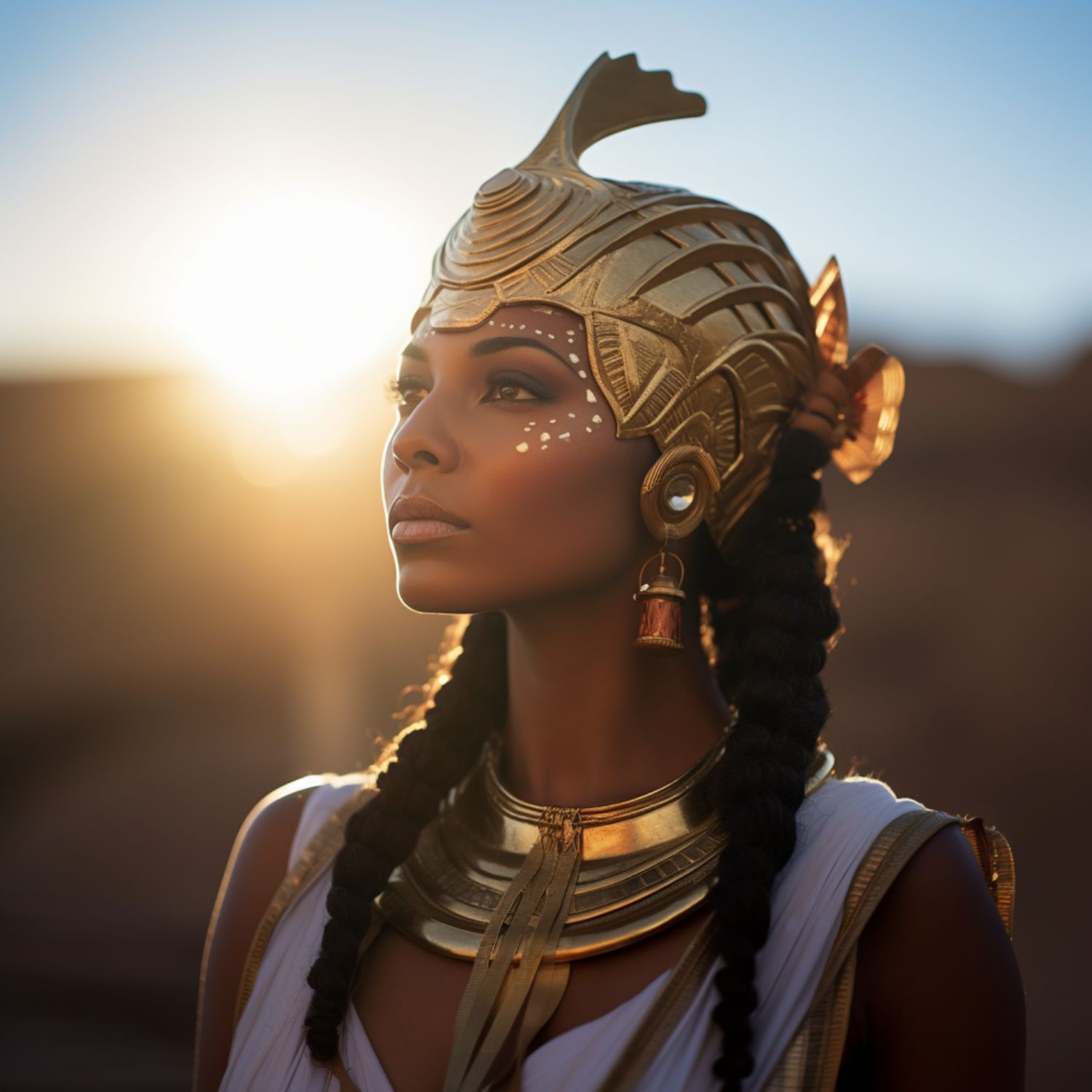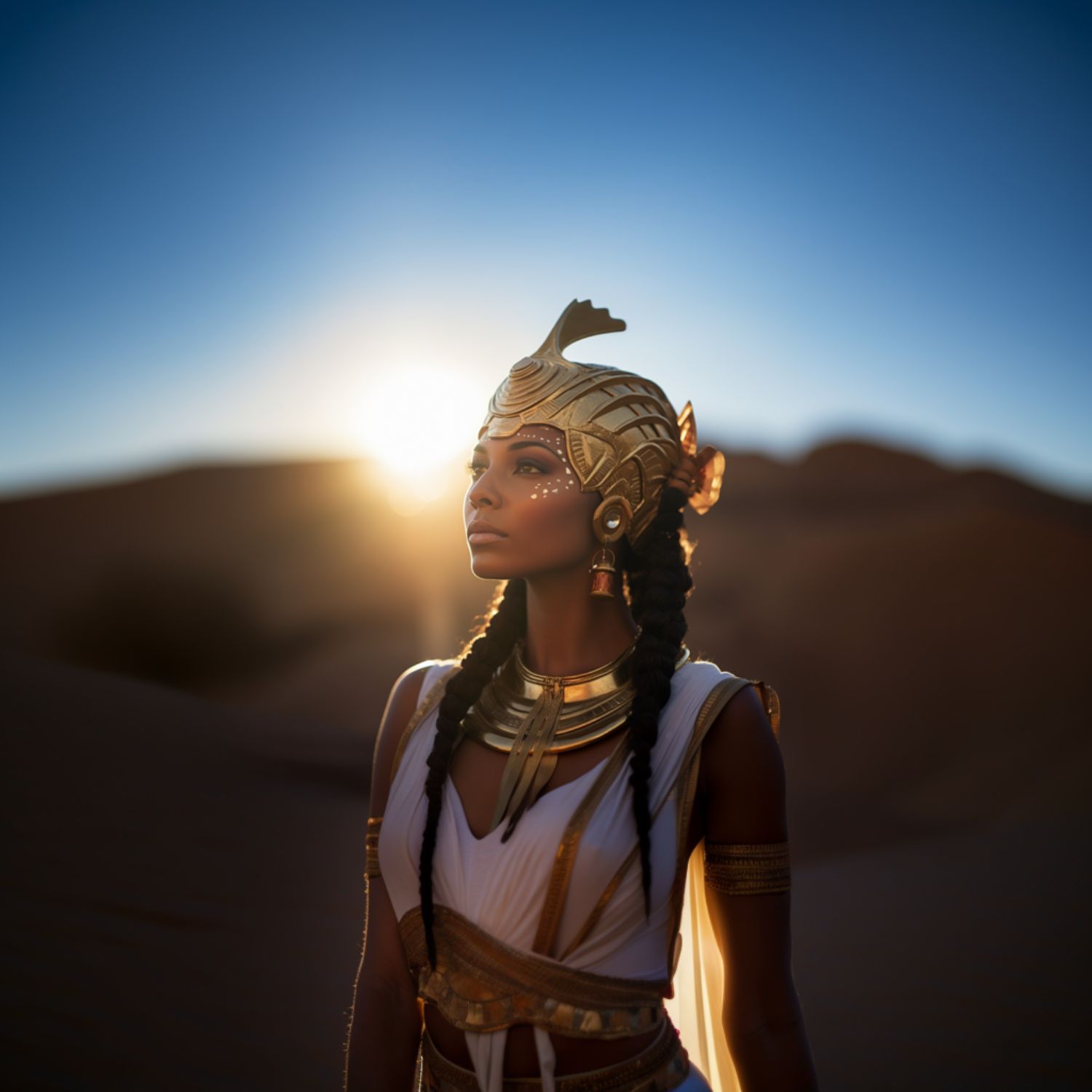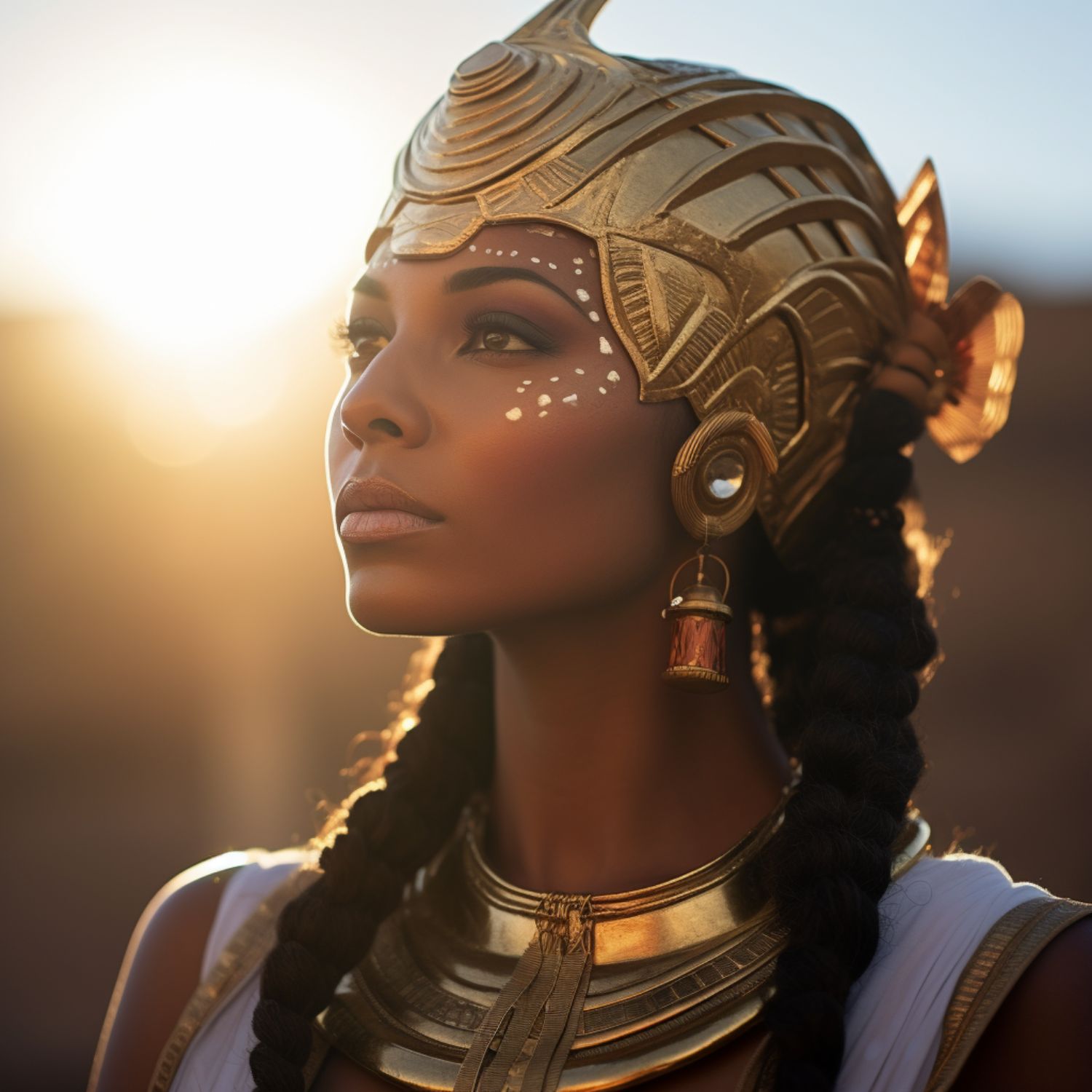Summary
The Pantheon of Ancient Egypt: Embracing Egyptian God Nut
Nut, the ancient Egyptian sky goddess, plays a pivotal role in the Egyptian pantheon. Her arching body forms the heavens, a symbol of protection and motherhood. Nut’s tale weaves through creation myths, where she gives birth to the sun each morning. It sets back into her mouth at dusk, traveling through her body at night. Her story also intertwines with the legends of Osiris, Isis, Set, and Nephthys, her children, who are central to Egyptian mythos. Beloved by the ancient Egyptians, Nut’s imagery adorned tomb walls. She promised the deceased safe passage to the afterlife. Her representation in art and hieroglyphs remains iconic, reflecting her significance across various dynasties. Nut’s enduring legacy showcases the Egyptians’ deep fascination with the cosmos and the afterlife.
Get your dose of History via Email
Nut’s Influence: Beyond the Heavens
Her influence extends to providing solace and guidance in the afterlife. Her celestial association made her worship integral to funerary rites. Many prayers and spells from the “Book of the Dead” invoke her name. These ensure the deceased’s safe journey and acceptance into the eternal fields of Iaru. Her portrayal as a celestial nurturer echoes in the hearts and traditions of the people. This strengthens our understanding of the Egyptian beliefs in rebirth and renewal. Celebrations during her feast days demonstrate the importance placed on the cycles of nature influenced by her cosmic domain. Today, Nut’s legacy breathes life through the cultural tapestry of modern times. Her stories and symbols continue to fascinate scholars and enthusiasts alike, reflecting humanity’s enduring quest for understanding the divine and the afterlife.

Nut: The Sky Goddess and Her Role in Creation
Nut is a cornerstone in the vast tapestry of Egyptian mythology. She embodies the sky itself, arched over the earth with twinkling stars on her body. Ancient Egyptians looked to Nut as a motherly protector. She enveloped the world, safeguarding it from the chaos outside. Her role was integral, not just in the heavens, but also in the birth of each day. Through her, the sun god Ra journeyed, reborn each morning. Elders and scholars alike revered her, teaching her tales through generations. Nut’s story is rich with themes of renewal, protection, and the perpetual cycle of day and night.
Ancient Egyptian god Nut’s Connection with the Earth
The Goddess Nut’s embrace extended to the earth and underworld, connecting all realms of existence. This divine figure is often depicted in a vibrant blue hue, speckled with golden stars, symbolizing the night sky. As a celestial bridge, she played a pivotal role in the transition of souls. Her union with Geb, the earth god, was at the heart of ancient creation myths. She was the sky, and he, the land; together, they represented the balanced union of above and below. Legends say that from this union, the principal deities of the Ennead sprouted forth, further shaping Egyptian cosmology with their own unique stories and powers.
Legacy and Worship of Nut
Her legacy extends far into the traditions of Egyptian culture. Her image adorns the inner lids of sarcophagi, a symbol of her role in rebirth and the afterlife. Followers and priests prayed for her guidance, hoping to gain her favor in their journey beyond. Her very essence was fundamental to the Egyptians’ understanding of the world and its workings. Festivals celebrated her, and her symbols permeated all levels of Egyptian art and architecture. Even today, Nut’s influence lingers in our fascination with the ancients, serving as an integral part of our quest to understand the human connection to the divine and the cosmos.
Nut’s Depiction in Egyptian Art: Symbolism and Imagery
The Goddess of the Sky
The ancient Egyptians held Nut in high esteem as the goddess of the sky. Her image graces many tombs and temples, arching protectively over the earth. The artists depicted her with a body covered in stars, symbolizing the heavens. This portrayal speaks to Nut’s role as a mother figure. She birthed the sun each morning and swallowed it each evening. In art, her elongated form often stretches across the sky, embracing the universe with her limbs. This visual representation conveys her importance in the cycle of day and night.
Symbolism in Colors and Iconography
In Egyptian art, colors were more than mere decoration; they held meaning. Nut often appears in a rich blue or a golden yellow. These colors represent the sky during the day and night. Artists sometimes paired Nut with the figure of the god Geb, the earth. When they did, they showed the connection between sky and earth. Iconographic elements also played a vital role. Stars and the ankh symbol highlighted her association with life and rebirth. By bringing these symbols into their art, artists communicated the goddess’s essence without words.
Influence on Mortuary Practices
Egyptian Goddess – Nut’s imagery transcended decorative art; it influenced mortuary practices. Coffins and sarcophagi bear her likeness as a form of protection for the dead. Her outstretched wings or hands offered comfort and guidance to souls entering the afterlife. The emphasis on Nut in funerary art underscores a profound belief in her role as a guardian. Through her artistic representation, the deceased gained assurance of Nut’s eternal vigilance over their final journey. Thus, the art became a silent prayer for safe passage beneath her celestial embrace.

The Relationship Between Nut and Geb: Cosmic Balance
Ancient Egyptian Cosmology: Nut and Geb’s Eternal Embrace
In ancient Egyptian mythology, Nut and Geb are timeless figures symbolizing the sky and the earth. Their union represents the fundamental elements of the cosmos. Texts from the pyramid era, such as the Pyramid Texts, offer a glimpse into this divine relationship. Hieroglyphs and tomb paintings depict Nut arched protectively over Geb, her starry limbs stretched across the sky. These visuals reinforce their tale as the parents of the gods—Osiris, Isis, Seth, and Nephthys. Their love story is a portrayal of balance, with Nut swallowing the sun each evening and birthing it anew each dawn. Geb, in his turn, supports all life, anchoring plants and creatures with his verdant body.
Duality and Cosmic Harmony
Geb and Nut’s entwined narrative reflects the ancient Egyptian concept of Ma’at, the principle of order, balance, and harmony. Scholars have used various dating methods, including carbon dating and comparative mythology, to understand the timeframe of these beliefs. These investigations suggest that the origins of the Nut-Geb myth are deeply rooted in the Old Kingdom period. No definitive conclusion brings an exact date to light, but the tale’s cultural significance endures. Throughout centuries, Egyptians honored Ma’at by mimicking the harmonious relationship of Nut and Geb. They believed in maintaining equilibrium in their own lives, as expressed in daily rituals and the judicial system.
Cultural Impact and Modern Interpretations
Nut and Geb’s story has transcended time, influencing art, literature, and rituals. Their embodiment of the natural order left a notable mark on Egyptian culture. Festivals, rituals, and architecture often contained elements honoring their celestial bond. Modern interpretations of their role in mythology have given rise to new theories, including astrological and environmental insights. While some aspects of their myth remain open to theories and interpretation, the underlying message is clear. This cosmic couple is a symbol of unity and balance, integral to the fabric of existence that connects all living entities, echoing through the ages in Egyptian cultural identity and beyond.
For further reading and to validate the information presented in this article, the following sources are recommended:

